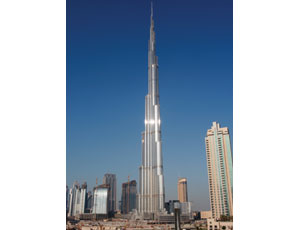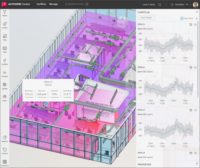An extensive program to survey and monitor the structural behavior and dynamic responses of the world’s tallest structure—the 828-meter Burj Khalifa in Dubai—has done more than validate the structural engineer’s design concepts. It could help improve future supertowers, says the keeper of the program. The monitoring system, which includes myriad sensors, will become a model for assessing critical and essential facilities, predicts Ahmad Abdelrazaq, an executive vice president of Samsung C&T Corp., Seoul, the burj’s lead builder.

The program “has given us information that will improve design for tall buildings and hopefully improve future structural systems [that use] new and more advanced materials,” says Abdelrazaq, a former structural engineer in the Chicago office of the burj’s design architect-engineer, Skidmore, Owings & Merrill. It will also give the owner information on the structural behavior under environmental conditions. That will allow better decisions about building operations, he adds.
Based on the behavior under lateral loads of the burj, a mostly concrete structure with a steel pinnacle, Abdelrazaq predicts that in generations to come, designers will be able to provide better-performing tall buildings that use less framing material.
The engineer also expects survey and monitoring programs to, over time, become an integral part of building design and “intelligent” building management systems, thanks to advances in computer technologies, fiber optic sensors, nanotechnology, dynamic monitoring devices, new global positioning system technologies and wireless monitoring techniques.
Dennis C.K. Poon, a managing principal of Thornton Tomasetti, New York City, which designed the world’s second-tallest building, the 508-m Taipei 101, agrees that the information from the burj’s program is beneficial to serve as a good reference for design criteria or assumptions for supertower design.
But, he says owners are often reluctant to install monitoring systems because of initial and operating costs. They are also often reluctant to share data, says Poon.
Measurements to date show the burj performing better than predicted for all building systems, at least during low-amplitude wind and seismic events, says Abdelrazaq. “We will continue monitoring all building components and examine all the assumptions made for analysis, design and construction for years to come.” He says performance data will be available to the design community.
During construction, the program gave immediate feedback regarding material strength, durability, elastic modulus, creep and shrinkage characteristics, total strain as a function of time, heat of hydration, cooling of the massive members and more. Post-construction data and details are also available on creep, shrinkage and foundation stiffness and dissipation of loads into the foundation system. This is important because the data could impact actual dynamic building stiffness and overall properties that must be considered in supertall buildings, says Abdelrazaq.
The program also gives feedback on tower acceleration since the completion of the building, which is currently being correlated to the predicted acceleration. This will allow an examination of basic assumptions made in wind tunnel tests and confirm whether present practice needs reexamination, says Abdelrazaq.
Assumptions during design about vortex shedding and damping under different wind and seismic events have been validated by the monitoring project. Feedback on the performance of the building’s steel pinnacle is also important to future design assumptions, especially regarding fatigue, says the engineer.
Calling the program “impressive,” John D. Hooper, a principal of structural firm Magnusson Klemencic Associates, Seattle, says it is not clear how the results will be directly applicable to other supertall buildings, given the burj’s unique configuration, height, structure and construction sequence. “The program’s apparent success does suggest that these efforts are valuable and should be considered for tall and unique structures,” he adds.




Post a comment to this article
Report Abusive Comment